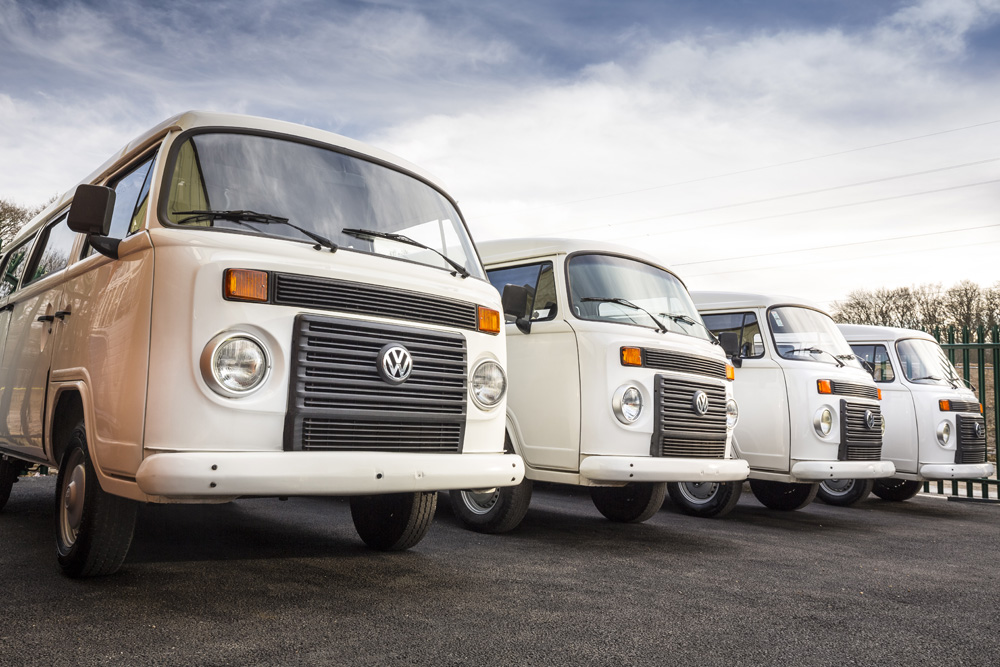What Happens in a Brazilian T2 Conversion?
It’s well established that the VW T2 and later models, such as the Danbury and Brazilian Kamper, are some of the most iconic vehicles that have ever hit our roads. To this day, there is still a hard core of those who want to convert a Kombi into a camper; for many the dream of owning and driving a classic style VW simply doesn’t die.
This article highlights some of the steps in the complex process of converting a VW Kombi into a stylish campervan.
Conversion Stages
Converting one vehicle into something completely different is a big job, with many individual stages to get right, especially something as unique as a Brazilian Kombi.
Insulation
Typically, one of the first steps is insulating the base, stripped vehicle. Heat insulation is applied to the side panels and, depending on tastes and preferences, perhaps adding carpeted flooring for extra heat retention.
Bear in mind that it takes some work to give a standard, sterile T2 minibus the warm, personable interior that features in a beautiful Brazilian camper.
Roof Panel Removal
You can’t have a Brazilian camper without that classic, instantly recognisable pop-top roof. For most styles of base van, this involves removing the majority of the panel roof, cutting appropriately to allow the new roof mechanisms to fill the space.
With the factory roof removed, the pop-top installation begins – this can be an arduous process, and one that requires experience, which is why you should always opt for professional converters, such as ourselves at VW Kampers.
Creating the Interior
Every VW camper deserves a stylish and comfortable interior! After the insulation and flooring of the base van has been completed, the next step is to consider the interior fixtures.
There are various options: quality ready-made flat pack kits can be purchased for self-assembly; allowing owners to get their hands dirty and feel like they’ve earned their resulting Brazilian camper.
Whilst excellent in terms of build and value for money, the ready-made approach is somewhat limiting with regard to personal taste and style. Brazilian campervans are rare enough treats in themselves, but some owners want to stand out further from the rest by designing bespoke interior fittings.
Thinking of their converted vehicle as a blank canvas at this point, it’s an opportunity for the owner to create their dream VW campervan!
Clearly this is a condensed and simplified view of the most important stages of the Brazilian T2 conversion process. It’s always worth thorough research before committing to such a project, as well as deciding how far you want to go with the conversion.
For example, is it a purely aesthetic VW camper that you’re going for? Or do you want to go the whole hog and rework the mechanics and engine, too?
What Happens in a Brazilian T2 Conversion?
It’s well established that the VW T2 and later models, such as the Danbury and Brazilian Kamper, are some of the most iconic vehicles that have ever hit our roads. To this day, there is still a hard core of those who want to convert a Kombi into a camper; for many the dream of owning and driving a classic style VW simply doesn’t die.
This article highlights some of the steps in the complex process of converting a VW Kombi into a stylish campervan.
Conversion Stages
Converting one vehicle into something completely different is a big job, with many individual stages to get right, especially something as unique as a Brazilian Kombi.
Insulation
Typically, one of the first steps is insulating the base, stripped vehicle. Heat insulation is applied to the side panels and, depending on tastes and preferences, perhaps adding carpeted flooring for extra heat retention.
Bear in mind that it takes some work to give a standard, sterile T2 minibus the warm, personable interior that features in a beautiful Brazilian camper.
Roof Panel Removal
You can’t have a Brazilian camper without that classic, instantly recognisable pop-top roof. For most styles of base van, this involves removing the majority of the panel roof, cutting appropriately to allow the new roof mechanisms to fill the space.
With the factory roof removed, the pop-top installation begins – this can be an arduous process, and one that requires experience, which is why you should always opt for professional converters, such as ourselves at VW Kampers.
Creating the Interior
Every VW camper deserves a stylish and comfortable interior! After the insulation and flooring of the base van has been completed, the next step is to consider the interior fixtures.
There are various options: quality ready-made flat pack kits can be purchased for self-assembly; allowing owners to get their hands dirty and feel like they’ve earned their resulting Brazilian camper.
Whilst excellent in terms of build and value for money, the ready-made approach is somewhat limiting with regard to personal taste and style. Brazilian campervans are rare enough treats in themselves, but some owners want to stand out further from the rest by designing bespoke interior fittings.
Thinking of their converted vehicle as a blank canvas at this point, it’s an opportunity for the owner to create their dream VW campervan!
Clearly this is a condensed and simplified view of the most important stages of the Brazilian T2 conversion process. It’s always worth thorough research before committing to such a project, as well as deciding how far you want to go with the conversion.
For example, is it a purely aesthetic VW camper that you’re going for? Or do you want to go the whole hog and rework the mechanics and engine, too?



Leave a Reply